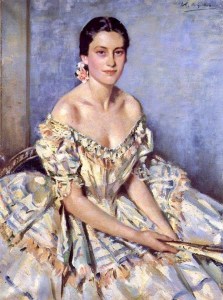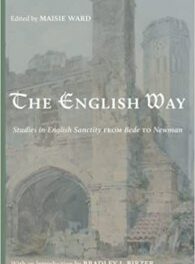We support our Publishers and Content Creators. You can view this story on their website by CLICKING HERE.
 She has been called “The Divine Jane,” and who can quibble with that sobriquet?
She has been called “The Divine Jane,” and who can quibble with that sobriquet?
My husband teaches at a college where her Emma is read senior year by every student. I object, but only because I think the work to introduce her in such a universal way ought to be Pride and Prejudice, accessible to the uninitiated but still brilliant to the reader who already knows her well.
A friend and colleague of my husband claims Mansfield Park as her greatest novel (I don’t know if he thinks this is the work we ought to require of our seniors), but while I imagine I could assemble a respectable argument against him, I suspect we agree on the essentials: neither of us would argue that any other novelist holds a candle to her.
Whenever I re-read Northanger Abbey or Persuasion, I am convinced that each of these in turn is my favorite of her books, yet this I know: one can say simply that she is The Novelist; and praise God, her charm endures.
She charms thirteen-year-olds as well as thirty-year-olds, sixteen-year-olds and sixty-year-olds, eighteen-year-olds and eighty-year-olds. Who can say whether the gladness one feels upon first reading her is greater or less than the mature joy one feels when returning to her for the who-knows-how-manyeth a time? You may as well compare the happiness of the convert with the beatitude of the life-long grateful Catholic, a Chesterton, and a Belloc. It is safest simply to say, her charm endures.
Two of my most treasured volumes are Talking of Jane Austen and More Talk of Jane Austen, published by Cassell in 1943 and 1950, respectively. Each was printed on paper at a time when paper was short (or so the pages feel), and written by the amiable team of Sheila Kaye-Smith and G.B. Stern, both English Catholic converts, novelists and writers of delightful memoirs. I do not think I have ever read either of my Talking of Janes cover to cover, because I would rather read Jane herself, but the books are delightful in their inspiration: both in what inspired their authors to write them, and in their inspiration for the reader to return to Jane.
So then, what inspires so many of us to continue to talk about Jane Austen?
As G.B. Stern explains in Chapter Two of Talking of Jane Austen,
If you assemble a number of people to visit a house which pleased them all, they will pour over the threshold in excellent fellowship; yet once inside, they may agree on nothing but the house itself, its facade and architecture, and the peculiar magic of the surrounding airs. Each will then discover that they love it for a different reason, express a preference for different rooms in the house…. But abandon metaphor; simply I wish to say that our common love of Jane Austen’s writing is no assurance that we will agree over this book and that, this character and that. A common love and admiration, a likely point (or several) of disagreement: What more could friends desire to fuel conversation?
Sheila Kaye-Smith, for her part, claims in Chapter One: “To most of these readers [those who have merely a passing acquaintance with Jane] she is the author of one book only—Pride and Prejudice—the book which most true Janeites (certainly the two who are writing here) would place at the bottom of her achievements.” (I must object, but first let’s finish Sheila’s thought.) “It is the only book of hers which seems to have in it the elements of a popular success—as demonstrated by its distorted yet profitable image on the stage and screen. Its slightly Cinderella-ish story, noble hero, and tint of farce have recommended it to many on whom the subtleties of Emma and the depths of Persuasion would be thrown away.…”
Be this as it may, my objection is that Pride and Prejudice might possibly be her most charming work: the work which charms most quickly and most broadly. And why, I ask, is this instant, wide, and truly enduring charm not an important factor in the ranking of a classic?
Sheila would, I hope, have recognized the A&E adaptation as faithful as well as profitable (heroic emergence from ponds aside). What she would have said about the Bollywood version (Bride and Prejudice) and the Mormon update (simply, again, Pride and Prejudice) I don’t dare consider. But I will say, I have enjoyed them both, as well as numerous sequels, updates, and spin-offs in the world of contemporary fiction. I have even written my own paean to P&P, a romantic comedy called The Paradise Project, set in modern times in a small Catholic community. There are no five Bennett sisters in my version, for it is not a simple retelling, but rather a story of those, like us and so many before us, who love Jane and are nourished by her books … but I will say that listening to a professional audio version of Pride and Prejudice, somewhere in the midst of working on my draft forty-seven or so, I had to stop myself from writing sentences on envelopes while I drove, and I wondered, smacking the steering wheel, asking aloud, “How does she do it?”—perhaps like Tolstoy, who was no doubt driving a sleigh and listening to a passenger beside him reading The Prime Minister (or was it The Betrams?) said, “Trollope kills me; kills me with his excellence!”
I do not mean to say that as Tolstoy is to Trollope, so I am to The Novelist. Rather, I feel reassured knowing that I am not the first writer to gape in awe at a great author whose works I have had the privilege to read. And I must say it is heartening, too, to know I have at least this exasperating wonder in common with Tolstoy.
I hope the opinions expressed herein, those of a single Janite, provoke conversation and commentary on, questions such as which of Jane’s works is her greatest, whether it is right and just to say she eclipses all other novelists (can you really, gentle reader, find me another so delightful and so worthy of debate?), and even whether it is true that Pride and Prejudice “is the only book of hers which seems to have in it the elements of a popular success.”
The one fact I cannot imagine needing comment concerns the truth of her enduring charm—Of course, it would be delightful if the readers of this essay would like to remark on their own enchantment by this or that work of Jane.
This essay was first published here in December 2015.
Republished with gracious permission of Crisis Magazine (September 2015).
The Imaginative Conservative applies the principle of appreciation to the discussion of culture and politics—we approach dialogue with magnanimity rather than with mere civility. Will you help us remain a refreshing oasis in the increasingly contentious arena of modern discourse? Please consider donating now.
The featured image is portrait of Jane Austen (c. 1935) by Wilfrid de Glehn, and is in the public domain, courtesy of Wikimedia Commons.
Share This Story, Choose Your Platform!
Go to Top

 Conservative
Conservative  Search
Search Trending
Trending Current News
Current News 






